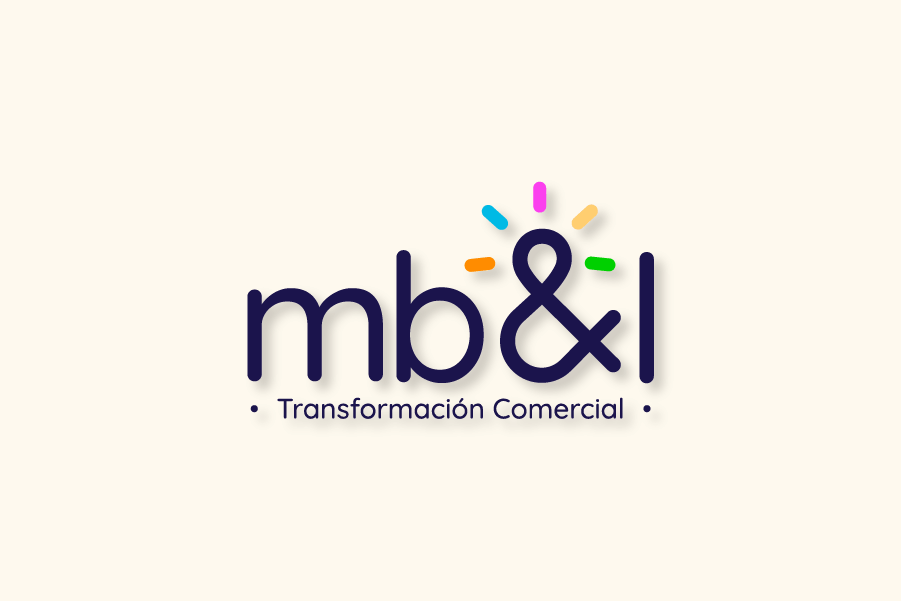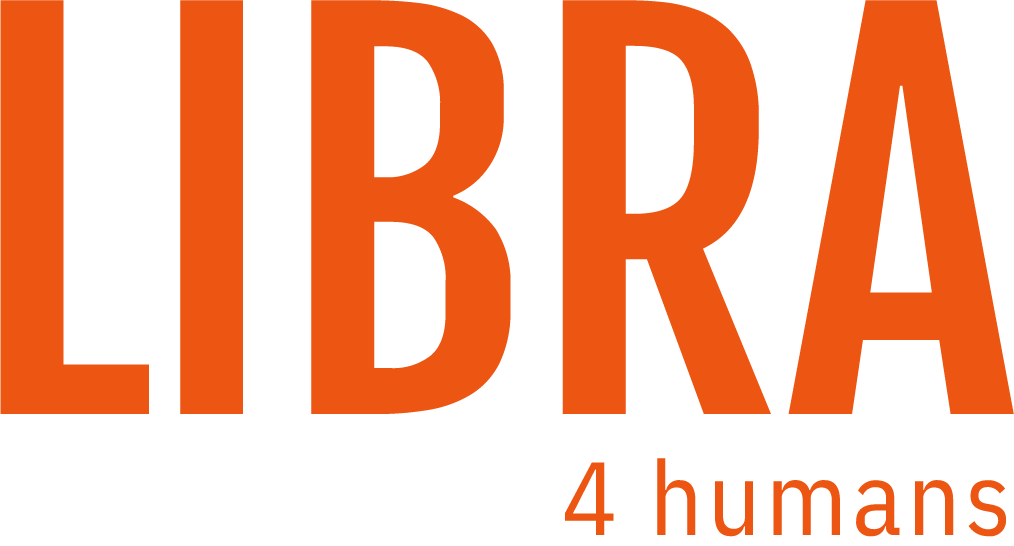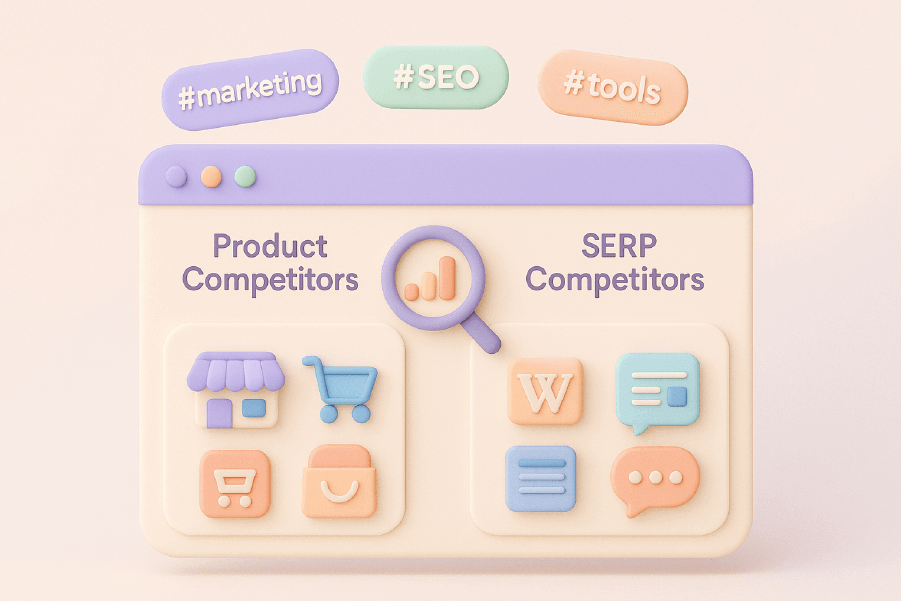Every successful company reaches a pivotal moment when their brand no longer reflects their reality. Maybe your startup has evolved beyond its scrappy origins, or your established business needs to connect with a new generation of customers. Perhaps negative associations are holding you back, or a merger requires a unified identity. Whatever the catalyst, rebranding represents one of the most significant strategic decisions a company can make—and when executed properly, it can unlock tremendous growth potential.
Rebranding isn’t simply about creating a new logo or refreshing your color palette. It’s a comprehensive transformation that touches every aspect of how your company presents itself to the world, from your visual identity and messaging to your brand positioning and customer experience. When done strategically, rebranding can revitalize your brand equity, attract new audiences, and position your company for sustained success in an evolving marketplace.
This guide will walk you through every aspect of the rebranding process, from recognizing when change is necessary to measuring the impact of your transformation. You’ll discover proven frameworks for strategic planning, learn from both successful rebrands and cautionary tales, and understand how to navigate the complex challenge of stakeholder buy-in while maintaining the loyalty of existing customers.
Key Takeaways
- Rebranding is a strategic marketing approach that transforms a company’s visual identity, messaging, and positioning to better connect with target audiences
- Companies like Nickelodeon, Pepsi, and McDonald’s have successfully used rebranding to stay relevant and attract new customers
- Partial rebrands update specific elements like logos or colors, while total rebrands involve complete overhauls of brand identity
- Proper planning, audience research, and stakeholder alignment are essential for rebranding success
- Failed rebrands like Gap’s 2010 logo change and Twitter’s X rebrand demonstrate the risks of poor execution
- Digital asset management tools and brand guidelines ensure consistency throughout the rebranding process
What is Rebranding?
Rebranding is a strategic marketing initiative designed to create a new, differentiated identity for an established brand. At its core, it involves updating or fundamentally transforming elements like logos, color palettes, typography, messaging, and overall brand positioning to better align with current business objectives and market conditions.
This process can range from minor visual refreshes that modernize outdated elements to complete corporate identity overhauls that affect every aspect of how a company presents itself. The primary aim is to enhance brand equity, attract new audiences, overcome negative associations, or signal significant business evolution.
Rebranding applies across industries and company sizes—from Fortune 500 corporations repositioning themselves in global markets to small businesses pivoting their service offerings to reach new demographics. What distinguishes strategic rebranding from cosmetic updates is its foundation in research, clear business objectives, and comprehensive implementation across all customer touchpoints.
The most effective rebranding efforts create emotional connections with audiences while maintaining enough continuity to preserve valuable brand recognition. This delicate balance requires understanding not just what your brand looks like, but what it stands for and how it makes people feel.

Types of Rebranding
Understanding the scope and scale of different rebranding approaches helps determine the right strategy for your specific situation and business goals.
Partial Rebrand
A partial rebrand focuses on updating specific brand elements while maintaining core brand recognition and equity. This approach typically involves modernizing visual components like logos, typography, or color schemes without fundamentally altering the brand’s identity or market position.
Characteristics of partial rebrands include:
- Logo modernization that retains recognizable elements
- Color palette refresh to feel more contemporary
- Typography updates for better digital performance
- Packaging design improvements
- Website and marketing materials refresh
Example: Pringles’ 2021 mascot redesign exemplifies successful partial rebranding. The company updated their iconic mascot with a more expressive design, added hair and eyebrows, and modernized the overall look while preserving the character’s essential recognizability. This approach maintained strong brand equity while appealing to younger consumers and improving shelf presence.
Partial rebrands represent a lower-risk approach ideal for brands with strong recognition but outdated visual elements. They preserve existing customer relationships while attracting new audience segments without the confusion or resistance that dramatic changes can create.
Total Rebrand
A total rebrand represents a complete transformation of brand identity, mission, vision, values, and market positioning. This comprehensive approach often includes changing the brand name itself and requires rebuilding brand recognition from the ground up.
Total rebrands typically occur following:
- Mergers and acquisitions requiring unified identity
- Major business pivots or market expansions
- Need to distance from negative associations
- Complete strategic repositioning
- Consolidation of multiple brands or services
Key considerations for total rebrands:
- Higher risk but potentially greater impact on brand perception
- Requires extensive planning and stakeholder involvement
- Longer implementation timelines and higher costs
- Need for comprehensive communication strategies
- Risk of losing existing brand equity and customer loyalty
Total rebrands demand careful execution and clear rationale communicated to all stakeholders. While they offer opportunities for dramatic transformation, they also carry significant risks that must be weighed against potential benefits and strategic necessity.
When to Consider Rebranding

Recognizing the right time for rebranding requires honest assessment of your current brand’s effectiveness and alignment with business objectives. Successful rebranding initiatives respond to clear strategic imperatives rather than aesthetic preferences or internal politics.
Primary Triggers for Rebranding
Negative brand associations that impede business growth represent one of the strongest cases for rebranding. When scandals, poor customer experiences, or market perceptions create barriers to customer acquisition or retention, a fresh brand identity can provide necessary distance and renewal opportunities.
Outdated brand identity that no longer resonates with target demographics signals disconnect between your brand’s visual representation and audience expectations. This misalignment often manifests as declining engagement, reduced brand preference among younger demographics, or feedback indicating your brand feels “behind the times.”
Major business changes such as mergers, acquisitions, or significant product launches create natural rebranding opportunities. When two companies merge, a unified brand identity helps establish cohesive culture and market presence. Similarly, companies expanding beyond their original offerings may need broader brand positioning to accommodate new business lines.
Market expansion into new geographies or customer segments often requires brand adaptation to resonate with different cultural contexts or demographic preferences. A brand that works well in domestic markets may need adjustment to succeed internationally or appeal to different age groups.
Competitive disadvantage in the marketplace can sometimes be addressed through strategic rebranding. If competitors have modernized their brands while yours remains static, rebranding can help regain competitive positioning and market relevance.
Assessment Framework
Before committing to rebranding, conduct thorough evaluation using multiple data sources:
- Customer research through surveys, focus groups, and interviews to understand current brand perception and emotional connections
- Market analysis comparing your brand positioning against competitors and industry trends
- Stakeholder interviews with employees, partners, and key customers to gauge internal and external sentiment
- Performance metrics reviewing brand awareness, customer acquisition costs, and market share trends
- Business objective alignment ensuring rebranding supports broader strategic goals rather than addressing superficial concerns
This assessment should confirm that rebranding addresses genuine business challenges rather than subjective preferences, and that the potential benefits justify the risks and investment required.
The Rebranding Process

A systematic approach to rebranding maximizes success while minimizing risks. The most effective rebranding efforts follow a structured process that emphasizes research, strategic thinking, stakeholder engagement, and careful implementation.
Research and Analysis Phase
The foundation of any successful rebrand lies in comprehensive understanding of your current position, audience needs, and market dynamics. This critical step ensures decisions are based on data rather than assumptions.
Conducting a thorough brand audit involves examining all current brand assets, analyzing customer sentiment, and assessing market position relative to competitors. This audit should document existing brand equity, identify elements worth preserving, and highlight areas requiring transformation.
Customer and stakeholder research provides essential insights into how your brand is currently perceived and what changes would strengthen connections with target audiences. Use surveys to quantify brand awareness and sentiment, conduct focus groups to understand emotional associations, and interview key stakeholders to gather qualitative feedback about brand performance and expectations.
Competitor and trend analysis reveals industry standards, emerging opportunities, and potential differentiation strategies. Study how competitors position themselves, identify gaps in the market, and examine successful rebranding efforts in your industry and adjacent sectors.
Defining objectives and KPIs establishes clear success metrics linked to business outcomes. Whether your goal is increased brand awareness, improved customer sentiment, or expansion into new markets, specific measurements enable progress tracking and ROI assessment.
Strategy Development
Strategic planning translates research insights into actionable direction for your new brand identity. This phase requires cross-functional collaboration and leadership alignment to ensure the rebranding strategy supports broader business objectives.
Redefining mission, vision, and values provides the foundation for all subsequent brand decisions. Your company’s purpose, aspirations, and principles should inform every aspect of the new brand identity, from visual design to messaging tone. This exercise often reveals evolution in company priorities that the rebrand should reflect.
Developing buyer personas and target audience profiles based on research findings helps ensure the new brand resonates with intended audiences. Create detailed profiles including demographics, psychographics, communication preferences, and relationship expectations to guide creative and strategic decisions.
Establishing brand voice, messaging, and content guidelines ensures consistency across all communications. Define your brand’s personality, tone, and key messages, then create frameworks for applying these elements across different channels and customer touchpoints.
Aligning leadership and stakeholders on rationale, scope, and desired impact prevents conflicts during implementation. Regular communication, clear documentation of decisions, and involvement of key stakeholders in strategic discussions builds the foundation for successful execution.
Creative Execution
The creative phase brings strategic vision to life through tangible brand elements that customers will experience across all touchpoints. This stage requires balancing creative innovation with strategic objectives and practical implementation requirements.
Designing core visual elements including logos, color palettes, and typography creates the foundation of your new visual identity. Each element should reflect your brand strategy while performing effectively across digital and print applications. Consider how your logo appears at various sizes, how colors reproduce across different media, and how typography supports readability and brand personality.
Generating new marketing materials and digital assets ensures consistent brand application across all customer touchpoints. This includes updating websites, social media profiles, business cards, letterhead, presentations, and any other materials that represent your brand to external audiences.
Producing comprehensive brand guidelines codifies rules for visual and verbal expression, ensuring consistent brand representation as your team grows and external partners get involved. These guidelines should cover logo usage, color specifications, typography rules, photography style, messaging frameworks, and application examples across different contexts.
Protecting new assets legally through trademark registration and copyright protections safeguards your investment in brand development and prevents competitive interference with your new identity.
Implementation and Launch
Successful implementation requires careful coordination across internal teams and external stakeholders, with particular attention to timing, communication, and feedback management.
Developing a comprehensive communication plan addresses both internal and external stakeholders with tailored messaging explaining the rationale behind changes and benefits for each audience. Internal communications should emphasize how the rebrand supports company growth and employee success, while external messages should focus on improved customer value and enhanced brand experience.
Training employees on new brand guidelines and messaging ensures consistent representation across all customer interactions. Conduct workshops covering visual brand application, updated messaging frameworks, and customer communication protocols. Address questions and concerns openly while emphasizing each employee’s role in successful brand implementation.
Executing phased rollout across brand touchpoints allows for testing, refinement, and manageable change management. Start with core materials like logos and websites, then expand to marketing collateral, signage, and other applications. This approach enables adjustment based on early feedback while maintaining business continuity.
Launching marketing campaigns to announce and explain the rebrand generates awareness and excitement while providing context for the changes. Use multiple channels to reach different audience segments, emphasizing benefits and continuity rather than just highlighting changes.
Monitoring brand sentiment and customer feedback during transition enables rapid response to concerns or confusion. Track social media mentions, customer service inquiries, and direct feedback to identify issues requiring additional communication or adjustment.
Successful Rebranding Examples
Learning from companies that have successfully navigated rebranding provides valuable insights into effective strategies and common success factors. These examples demonstrate different approaches to brand transformation while highlighting key principles that contribute to positive outcomes.
Nickelodeon 2023: Balancing Heritage with Innovation

Nickelodeon’s decision to bring back their iconic “splat” logo represents a masterful example of leveraging brand heritage while modernizing for contemporary audiences. The network recognized that nostalgic parents represented a valuable secondary audience alongside their primary demographic of children.
Strategic approach: Rather than abandoning their recognizable orange splat entirely, Nickelodeon refreshed the design while maintaining its essential character. The updated logo retained the playful, energetic feel that defined the brand while incorporating contemporary design sensibilities that appealed to both children and their parents.
Key success factors:
- Preserved strong brand recognition and emotional connections
- Unified multiple generations around shared brand experience
- Maintained core brand personality while feeling fresh and current
- Demonstrated that heritage can be an asset rather than limitation
Results: The rebrand successfully positioned Nickelodeon as connecting families across generations while maintaining their leadership position in children’s entertainment. Social media engagement increased significantly, with both nostalgic adults and young viewers responding positively to the updated identity.
LG 2023: Embracing Digital-First Design

LG’s transformation from a static 3D logo to an animated 2D design with expressive motion elements represents strategic adaptation to digital-first brand experiences. The technology company recognized that their visual identity needed to perform effectively across digital touchpoints where animation and motion enhance brand personality.
Strategic approach: The new visual identity system emphasized flexibility and expression through animated characters and brighter color palettes. This shift positioned LG as innovative, people-centric, and aligned with younger demographics while honoring Korean heritage through design elements.
Implementation highlights:
- Animated logo variations for different digital contexts
- Expanded color palette supporting diverse applications
- Brand characters enabling personality expression across communications
- Emphasis on “Life’s Good” philosophy through visual storytelling
Impact: The rebrand supported LG’s positioning as a forward-thinking technology company while improving brand performance across digital channels. The animated elements provided memorable differentiation in crowded technology markets while the brighter palette improved shelf presence and digital visibility.
Zoom 2021: Platform Evolution Communication

Zoom’s rebranding reflected rapid business evolution from a single-product video calling app to a comprehensive communications platform. The pandemic accelerated company growth and expanded use cases far beyond original positioning, requiring brand identity that reflected this transformation.
Strategic rationale: As Zoom introduced new tools like Zoom Whiteboard and Zoom Contact Center, their brand needed to communicate platform breadth rather than single-function focus. The rebrand positioned Zoom as enabling comprehensive communication and collaboration rather than just video meetings.
Execution elements:
- Visual identity supporting multiple product lines
- Messaging emphasizing platform capabilities over individual features
- Brand architecture accommodating current and future product expansion
- Maintained recognition while expanding brand meaning
Business impact: The rebrand supported successful market expansion beyond video conferencing into broader enterprise communications. Customer understanding of Zoom’s capabilities increased, enabling cross-selling opportunities and stronger competitive positioning against comprehensive platform providers.
Common Rebranding Mistakes
Understanding frequent pitfalls in rebranding helps avoid costly errors that can damage brand equity and customer relationships. These cautionary examples highlight the importance of strategic planning, customer consideration, and careful execution.
Gap’s Failed Logo Change (2010): Ignoring Customer Emotional Connection
Gap’s infamous logo replacement demonstrates what happens when companies underestimate customer emotional attachment to familiar brand elements. The clothing retailer replaced their beloved classic logo with a generic design that lacked personality and failed to communicate brand values effectively.
Critical errors:
- No clear strategic rationale communicated to customers
- New design felt generic and corporate rather than authentic
- Failed to test customer response before full implementation
- Underestimated emotional connection customers had with original logo
- Poor crisis management when negative feedback emerged
Customer response: Immediate and intense backlash across social media forced Gap to reverse the change within six days of launch. Customers felt the new logo didn’t represent the brand they knew and loved, viewing the change as unnecessary and poorly executed.
Lessons learned: Even successful brands must respect existing customer relationships and emotional connections. Changes require clear justification and should enhance rather than diminish brand personality. Customer feedback should inform decision-making throughout the process, not just after launch.
Twitter to X Rebrand (2023): Abrupt Change Without Preparation
The sudden transformation of Twitter to “X” illustrates risks associated with dramatic rebranding without adequate preparation, communication, or consideration for user experience and brand equity.
Strategic missteps:
- Abrupt implementation without user preparation or explanation
- Loss of significant brand equity built over years of market presence
- Confusion about platform functionality and purpose
- Poor integration with existing user expectations and behaviors
- Inadequate communication strategy for managing transition
Market reaction: Users expressed confusion and frustration with the sudden change, many continuing to refer to the platform by its original name months after the rebrand. The change eroded trust and created uncertainty about platform direction and stability.
Key takeaways: Successful rebranding requires gradual transition, clear communication, and respect for existing user relationships. Companies should preserve valuable brand equity while evolving, rather than discarding recognition built over time.
Google Workspace Icons: Functionality Over Clarity
Google’s redesign of Workspace application icons prioritized visual consistency over user functionality, creating confusion that negatively impacted user experience and required subsequent corrections.
Design failures:
- New icons looked too similar across different applications
- Reduced usability and quick visual identification
- Prioritized aesthetic consistency over functional clarity
- Failed to consider user workflow and recognition patterns
User impact: Decreased productivity as users struggled to quickly identify correct applications, particularly problematic for frequent Workspace users who relied on visual recognition for efficiency.
Resolution approach: Google implemented design modifications to improve distinction between applications while maintaining visual system coherence, demonstrating importance of user testing and iterative improvement.
Measuring Rebranding Success

Effective measurement of rebranding impact requires comprehensive tracking across multiple metrics that align with your strategic objectives. Success assessment should combine quantitative data with qualitative insights to provide complete understanding of brand transformation effectiveness.
Brand Awareness and Recognition Metrics
Brand awareness tracking provides fundamental measurement of rebranding impact on market recognition and recall. Conduct pre-rebrand baseline measurements, then track changes through aided and unaided awareness surveys at regular intervals following launch.
Key metrics include:
- Unaided brand recall (customers mentioning your brand without prompting)
- Aided brand recognition (customers identifying your brand when presented with options)
- Brand attribute association (customers connecting your brand with desired characteristics)
- Competitive awareness positioning (your brand’s recognition relative to competitors)
Measurement timing: Assess immediately after launch, then at 3, 6, and 12-month intervals to track awareness development and identify trends requiring attention or adjustment.
Customer Sentiment and Engagement Analysis
Brand sentiment monitoring reveals how customers feel about your rebrand and whether emotional connections are strengthening or weakening. Use social listening tools, customer feedback surveys, and direct communication analysis to track sentiment changes.
Social media engagement metrics:
- Mention volume and sentiment analysis across platforms
- Engagement rates on brand-related content (likes, shares, comments)
- User-generated content featuring your new brand elements
- Hashtag usage and organic brand conversation development
Website and digital performance:
- Traffic volume and source analysis comparing pre and post-rebrand periods
- Time on site and page engagement indicating user interest and connection
- Conversion rates showing whether brand changes support business objectives
- Email engagement rates reflecting subscriber response to new brand identity
Business Performance Indicators
Revenue and market share analysis provides concrete measurement of rebranding business impact. Track sales performance, customer acquisition costs, and market positioning changes to assess whether brand transformation supports growth objectives.
Customer behavior metrics:
- Customer acquisition rates and source attribution
- Customer lifetime value changes indicating stronger brand connection
- Retention rates showing whether existing customers remain loyal during transition
- Cross-selling success reflecting expanded brand meaning and trust
Employee engagement measurement:
- Internal surveys assessing employee understanding and enthusiasm for new brand
- Brand advocacy behaviors among staff members
- Productivity and culture metrics indicating internal brand adoption
- Recruitment and retention improvements linked to stronger employer brand
Long-term Brand Equity Assessment
Market research studies conducted 6-12 months post-rebrand provide comprehensive analysis of brand equity changes and competitive positioning improvements. These studies should assess brand strength, customer preference, and perceived value relative to competitors.
Financial impact analysis:
- Return on investment calculation comparing rebrand costs to measurable benefits
- Brand valuation changes reflecting increased market recognition and customer preference
- Premium pricing capability indicating stronger brand positioning
- Partnership and collaboration opportunities enabled by enhanced brand reputation
Continuous monitoring approach: Establish ongoing measurement systems rather than one-time assessments to track long-term brand health and identify optimization opportunities. Regular monitoring enables proactive adjustments and demonstrates sustained rebranding value.
Tools and Resources for Rebranding

Modern rebranding efforts benefit from sophisticated tools and platforms that streamline collaboration, ensure consistency, and enable effective measurement throughout the transformation process.
Digital Asset Management and Brand Consistency
Digital asset management platforms like Frontify provide centralized repositories for brand assets, ensuring all team members and external partners access current, approved materials. These platforms maintain version control, track asset usage, and provide approval workflows that prevent outdated or incorrect brand applications.
Key capabilities:
- Centralized storage for logos, images, templates, and brand guidelines
- Permission controls ensuring appropriate access levels for different users
- Download tracking and usage analytics for asset management
- Integration with design tools and marketing platforms for seamless workflow
Brand kit tools in platforms like Canva enable consistent visual creation across teams while maintaining brand compliance. These tools provide templates, color palettes, and design elements that non-designers can use effectively while staying within brand guidelines.
Collaboration and Project Management
Project management software helps coordinate complex rebranding timelines involving multiple departments, external agencies, and stakeholder groups. Platforms like Asana, Monday.com, or Microsoft Project enable task assignment, deadline tracking, and progress visualization across all rebrand components.
Collaboration features:
- Task assignment and progress tracking across teams
- File sharing and approval workflows for creative assets
- Timeline visualization helping identify dependencies and potential delays
- Communication tools keeping all stakeholders informed of progress and decisions
Stakeholder feedback platforms streamline review and approval processes for creative materials, reducing revision cycles and ensuring clear communication about required changes.
Analytics and Measurement Tools
Google Analytics and similar platforms provide comprehensive website performance tracking before, during, and after rebrand implementation. Set up custom dashboards monitoring key metrics like traffic sources, user behavior, and conversion rates to assess rebrand impact on digital engagement.
Social listening tools like Hootsuite, Sprout Social, or Brandwatch monitor brand mentions across social media platforms, news sites, and online forums. These tools track sentiment changes, identify trending topics related to your rebrand, and provide early warning about potential issues requiring response.
Survey and research platforms such as SurveyMonkey, Typeform, or Qualtrics enable systematic collection of customer feedback and brand perception data. Create pre and post-rebrand surveys measuring awareness, sentiment, and brand attribute associations.
Design and Creative Tools
Professional design software including Adobe Creative Suite provides comprehensive capabilities for logo development, marketing material creation, and brand guideline production. These tools ensure high-quality creative output while maintaining consistency across all brand applications.
Template and style guide creation tools help codify brand guidelines into usable resources for ongoing brand application. Platforms like Figma or Sketch enable creation of component libraries and style guides that teams can reference and implement consistently.
Cloud-based brand guidelines platforms make brand standards accessible to all stakeholders while maintaining current information and providing usage examples. These tools often include interactive elements helping users understand appropriate brand application across different contexts.
FAQ
How long does a typical rebranding process take? Complete rebrands typically require 6-12 months from initial planning through full implementation, while partial rebrands focusing on visual elements can be completed in 3-6 months. Timeline varies significantly based on company size, scope of changes, and complexity of implementation across multiple touchpoints. Large organizations with extensive brand presence may require longer timelines to ensure consistent rollout across all divisions and markets.
How much should companies budget for rebranding? Rebranding costs vary dramatically from $10,000 for small business partial rebrands to millions for comprehensive corporate transformations. Factors influencing cost include scope of changes, agency involvement, number of applications requiring updates, and implementation complexity. Budget should account for creative development, legal protections, implementation across all touchpoints, and marketing campaigns to announce changes.
Should companies rebrand if they’re already successful? Successful companies may benefit from strategic rebranding to prevent stagnation, enter new markets, or stay relevant to evolving demographics, but should carefully weigh risks against benefits. Consider rebranding when research indicates your current brand limits growth opportunities or fails to resonate with target audiences. Maintain elements that contribute to current success while updating aspects that no longer serve strategic objectives.
How can companies minimize rebranding risks? Risk mitigation requires thorough research, customer involvement in the process, preservation of familiar brand elements where appropriate, and gradual implementation rather than abrupt changes. Test concepts with focus groups, maintain clear communication throughout the process, and have contingency plans for addressing negative feedback. Strong project management and stakeholder alignment reduce execution risks.
What’s the difference between rebranding and brand refresh? Brand refresh involves minor updates to existing visual elements like logos, colors, or typography while maintaining core brand recognition and positioning. Rebranding represents more substantial changes to brand identity, positioning, messaging, or strategy that may alter how customers perceive and interact with your brand. Choose refresh for modernization needs, rebrand for strategic transformation requirements.
Case Study: mb&l Consultores – Strategic Transformation Through Purpose-Driven Rebranding

mb&l Consultores, a Latin American management consulting firm, embarked on a comprehensive rebranding initiative in 2023 to better reflect their evolution from traditional business consultancy to purpose-driven organizational transformation specialists. Their experience illustrates key principles of successful B2B rebranding while highlighting unique challenges in professional services markets.
Background and Strategic Rationale
Founded in 2008, mb&l Consultores built strong reputation providing management consulting services to mid-market companies across Latin America. However, by 2022, leadership recognized their brand identity no longer reflected their expanded capabilities in organizational culture, digital transformation, and sustainable business practices.
Key drivers for rebranding:
- Service offerings had evolved beyond traditional management consulting
- Increasing client demand for purpose-driven business transformation
- Need to differentiate from commoditized consulting marketplace
- Opportunity to attract top talent aligned with company values
- Expansion into new geographic markets requiring stronger brand positioning
Research and Strategy Development
The consulting firm conducted extensive research involving current clients, prospective customers, and internal stakeholders to understand brand perception and transformation opportunities.
Research findings:
- Clients valued mb&l’s collaborative approach but perceived them as traditional consultants
- Younger client contacts sought partners demonstrating commitment to social impact
- Internal team felt disconnected from brand identity that didn’t reflect their values
- Competitive analysis revealed opportunity for purpose-driven positioning
Implementation and Creative Execution
The rebranding process addressed visual identity, messaging, and service positioning while maintaining recognition among existing clients.
Visual identity transformation:
- New logo incorporating interconnected elements representing collaboration and growth
- Expanded color palette reflecting energy and optimism while maintaining professional credibility
- Typography selection balancing approachability with expertise
- Photography style emphasizing human connections and diverse perspectives
Messaging framework updates:
- Brand voice shifted from formal consulting language to conversational, values-driven communication
- Service descriptions emphasized outcomes and impact rather than methodologies
- Case studies restructured to highlight client transformation stories
- Website redesign showcasing purpose-driven approach and team expertise
Stakeholder Management and Internal Alignment
Managing partner buy-in and team adoption required careful communication and involvement throughout the transformation process.
Internal engagement strategies:
- Leadership workshops aligning senior partners on new brand positioning
- Team sessions gathering input on brand values and personality
- Training programs helping consultants communicate new brand promise
- Performance metrics incorporating brand consistency and client feedback
Client communication approach:
- Advance notification to key clients explaining rebrand rationale and timeline
- Gradual rollout maintaining continuity during transition period
- Updated proposals and presentations showcasing new brand identity
- Client feedback sessions ensuring positive reception and addressing concerns
Lessons Learned and Best Practices
mb&l’s rebranding experience provides valuable insights for other professional services firms considering brand transformation.
Critical success elements:
- Purpose-driven positioning must be authentic and supported by actual company practices
- B2B rebranding requires longer relationship-building timelines than consumer markets
- Employee engagement in brand development increases adoption and advocacy
- Existing client relationships provide foundation for testing new brand concepts
Challenges addressed:
- Balancing innovation with professional credibility expectations in conservative consulting market
- Managing partner concerns about losing established client relationships
- Ensuring new brand positioning supported by actual service delivery capabilities
- Coordinating complex rollout across multiple markets and client relationships
mb&l’s successful transformation demonstrates that strategic rebranding can revitalize professional services firms while strengthening client relationships and market positioning. Their experience emphasizes the importance of authentic brand development, stakeholder engagement, and systematic implementation in achieving sustainable rebranding success.
Conclusion
Rebranding represents one of the most powerful tools available for business transformation, but success requires strategic thinking, careful planning, and disciplined execution. The companies that achieve remarkable results through rebranding share common characteristics: they base decisions on solid research, maintain clear focus on customer needs, and execute with consistency across all touchpoints.
Whether you’re considering a partial refresh to modernize outdated elements or a complete brand transformation to support new business directions, the principles outlined in this guide provide a framework for making informed decisions and avoiding common pitfalls. Remember that successful rebranding isn’t about following trends or personal preferences—it’s about creating authentic connections with your target audience while supporting your company’s long-term strategic objectives.
The investment in strategic rebranding can yield significant returns through improved market positioning, stronger customer relationships, and enhanced business performance. However, the stakes are high, and the margin for error is narrow. Companies that approach rebranding with thorough preparation, stakeholder alignment, and comprehensive measurement are positioned to unlock the transformative power of strategic brand evolution.
As you evaluate your own brand’s current effectiveness and future potential, consider whether your existing identity truly reflects your company’s vision, values, and market aspirations. If gaps exist between your brand promise and business reality, strategic rebranding may provide the pathway to stronger market position and sustained growth. The key is ensuring that any changes you make are grounded in strategy, supported by research, and executed with the discipline necessary to build lasting brand equity in an increasingly competitive marketplace.






